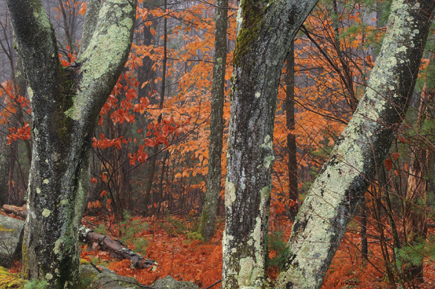Nikon’s D300; 12.3Mp, Live View, Picture Control & More
The new flagship model of the Nikon advanced amateur (or semi-pro, if you will) line-up, the 12.3-megapixel DX-sensor (1.5x multiplication factor) D300 incorporates all the latest features in the D-SLR realm, and then some. Sporting a new digital image processor, dubbed EXPEED, and a 3" monitor, the D300 can create 12-bit or 14-bit NEF images and capture up to 8 frames per second (fps) when using the accessory battery pack or AC adapter (6 fps without). The first Nikon DX camera to feature a LiveView system, the camera also has a self-cleaning, Nikon-developed CMOS sensor and a host of in camera effects and options. The D300 is clothed in a magnesium-alloy body and has the look and feel of a rugged, pro-caliber camera with a 100 percent frame coverage viewfinder. It shares numerous features found in the new pro D3 (a review of this full-frame camera is in the works) and a 51-point AF system with 15 cross-type sensors. Impressive specs, no doubt, but not inexpensive at $1799 list, body only.
 |
|
 |
|
|
Front to back and top to bottom, the D300 will be very familiar in terms of
controls and setup to those who have worked with just about any Nikon advanced
D-SLR in the past. The larger 3" monitor does not seem to cramp the control
buttons on the back, due to Nikon's sticking with the toggle-type control
on the back rather than a knurled dial. At 1.82 lbs it is not lightweight, but
choosing magnesium alloy for the body helps cut down on what might have been
a heavier body. It's also appreciated that Nikon has stuck with CompactFlash
(CF) memory cards, rather then the SDHC cards of its amateur cousins, the D40
and D40X. We have noted that other makers have tended to stick with CF in their
advanced amateur models as well.
Playback, menu, information, lock buttons, and the ever-helpful trash button
are all highly accessible and in familiar locations. And, most of the controls
you'd want to call on in the field are handily placed on the camera body,
including quality (format and size), ISO (ISO 200 to 3200, expandable to ISO
100 and 6400), white balance, exposure compensation, metering pattern (Matrix
CWA and Spot), AF mode and pattern, framing rate, etc. And yes, there is a built-in
flash; manufacturers have learned that pros and advanced amateurs indeed want
one even in their elite camera bodies. This one has the usual GN of about 48
(at ISO 200).
 |
|
|
|
 |
|
|
There are a number of interesting new features that come with the package, such as linkage of exposure, focus control, and white balance that Nikon dubs their Scene Recognition System (SRS). This is an extension of their 3D Matrix Metering II setup, where the framed shot is analyzed by the 1005 segment sensor for light and color and then referred to a look-up table for an exposure solution. Now, the analysis includes subject motion and highlights, as well as being able to "infer" light sources for white balance settings. Nikon of course keeps how this works close to the vest, but for me the proof is always in the pudding, and I have to say that the Matrix meter and SRS delivers some of the most intuitive exposures I have yet to see from an evaluative-type system. In some cases it matched what I accomplished with some very careful spot metering and exposure compensation techniques.
Fill Balance |
|
 |
|
|
There's also an "active" D-Lighting option that can be chosen
to deal with highlight control, said to yield improved contrast rendition and
wrestle with the bane of digital photography, too-hot highlights. You set this
before making the shot or shots, not as a Retouch menu item after exposure and
review (which is still available). My tests show that this works quite well,
but it should not lull you into thinking that this in any way expands dynamic
range of the sensor. That remains what it remains. But it does change the tonal
curve enough to give you some advantages in high-contrast lighting situations.
For LiveView fans there are two modes--Tripod and Handheld. For the most
part these can be helpful for close-up macro shooting with a tripod, where you
can magnify the subject up to 10x for fine focus control on the 3" screen,
and when you can't look through the finder for the shot, like when you
hold the camera up over your head. Of course, this introduces shutter lag back
into the scheme so while useful don't think you can do any action shooting
with this setup. And the inclusion of 15 cross-type sensors, which are decidedly
a more accurate way to focus, make this a snappy focuser indeed. We'll
take a closer look at these items shortly.
Live View - Handheld Mode |
|
 |
|
|
For a camera with all the options the D300 offers, the buttons and dials seem seductively simple, until you begin to explore what's in store inside. Opening a menu on any D-SLR these days is like peeling an onion, with layer upon layer of options. Included is Nikon's new Picture Control System, a renamed Image Optimization menu that can be customized to the nth degree. There are also 48 Custom settings to help you set up the controls and options of the camera to your heart's content and assign various functions to however you want the camera to handle.
Speed & Noise |
|
 |
|
|
- Log in or register to post comments

































